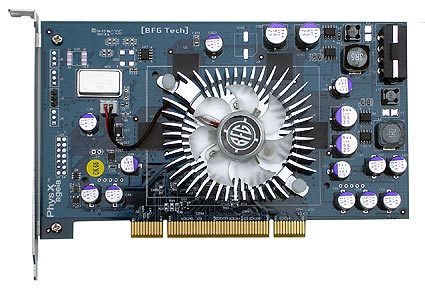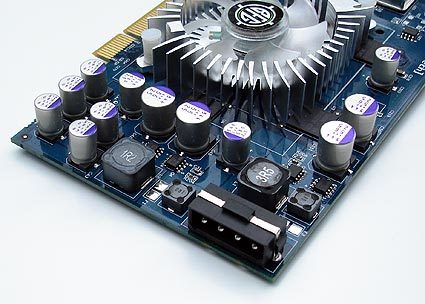Is Ageia's PhysX Failing?
Types of Physics
Current games generally use three types of engine. The first is the game engine itself, such as the Doom 3 or Source engine, which runs the majority of all gameplay functions. The next two are physics-related in that their computations can be similar in nature, but they are different in scope: gameplay physics and effects physics. The difference comes from where physics calculations are used in the game.
As the name suggests, gameplay physics are those that have an effect on the play of the game. In essence, this form of physics is what is needed to make a particular game run. This level of physics is incorporated into the core of the game, covering aspects such as gravity or inertia. For example, if you want your characters and objects in the virtual world to stay on the ground, then you need to apply a force to each.
Developers tend to limit gameplay physics to a minimum, as they want to maximize the possible installable base for their products. The level of required physics for each game can be roughly determined by looking at the side of a game's retail box under "minimum system requirements". According to ATI and Nvidia, developers are currently not working on titles that require a PPU card to accelerate the gameplay physics. This makes sense, as few people are willing to go purchase an additional card just to make a particular game run.
Effects physics are different in that they may impact the experience of the gamer, but not the outcome of the game. Thus, they represent added effects that can be enabled if specific hardware is available to do the computations. These effects are "scaleable and dial-able", meaning that the number of particles you want in a scene can be increased or decreased. There are a number of different effects that can be turned on and off, but users and some titles go as far as disabling features if the required hardware is not present.
The understanding is that some effects physics will migrate over to the realm of gameplay physics as they are deemed necessary; creativity in generating new forms of gameplay will dictate this migration. If the new element added to a game creates consumer demand, then these will become mandatory in subsequent game titles. As an effect becomes more commonplace, it is increasingly likely to be incorporated into more titles. It is very possible that these effects could become gameplay physics elements instead of a selectable option in a game. Perhaps one day we will need hardware acceleration in some games, but for now we do not see that on the horizon.
An example of effects physics that changed the gaming world was the gravity gun in Half-Life 2, which allows the player to pick up objects from the game world and turn them into weapons. We will soon see games adding more objects to scenes, and we will then see players interact with their virtual world in ways that resemble the real world more than ever before. As with graphics, physics is about immersion, and the better it looks and reacts, the more likely our brains will filter out the fact that what we are experiencing is just a game. When a new game title with specific physics becomes a must for gamers we will see other titles rise to meet the new bar. There have been several games that exceeded the expectation levels of gamers, and have even ruined the gameplay experience of other games because they lack this new level of entertainment.
Get Tom's Hardware's best news and in-depth reviews, straight to your inbox.
Current page: Types of Physics
Prev Page PhysX Only Might Not Be Enough Next Page So, Cell Factor Doesn't Need a PhysX Card?
